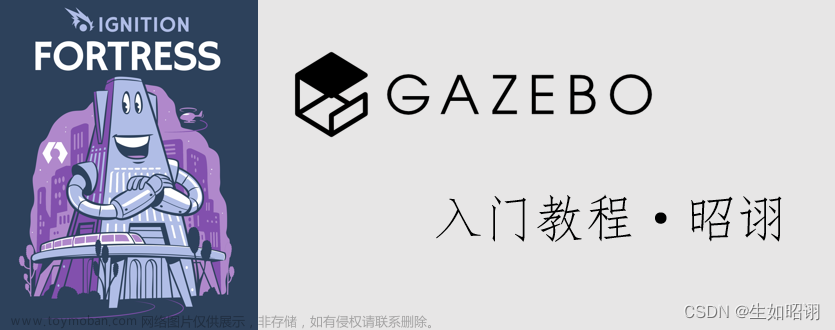OpenGL ES入门教程(一)编写第一个OpenGL程序
前言
从本文开始我将参考学习OpenGL ES应用开发实践指南 Android卷 [(美)KevinBrothaler著](提取码: 394m),并基于自己的理解以更加通俗易懂的方式讲解如何应用OpenGL ES。本系列教程的目标是应用OpenGL,所以不会涉及太多的理论知识,主要讲解方式是基于简单功能的代码拆解,学会对OpenGL ES的应用。原著文章的代码都是在eclipse工具实现,本系列教程采用Android studio工具进行实现。
既然你都看到这篇文章了,想必已经知道什么是OpenGL ES了,我也就不做赘述,本篇教你编写第一个Android上的OpenGL程序,万事开头难,但头开了,就成功了一半了。
文章内容都是个人理解,必然存在表述不专业甚至错误的情况,如有错误,还请各位博友积极指出,感谢。
1. 新建android项目
新建一个空的项目,默认Activity的代码框架如下:
public class MainActivity extends AppCompatActivity {
@Override
protected void onCreate(Bundle savedInstanceState) {
super.onCreate(savedInstanceState);
setContentView(R.layout.activity_main);
}
}
2. 初始化OpenGL
上面我们显示的页面是xml布局的页面,如果采用OpenGL绘制页面,就需要用OpenGL自己的载体,而不必采用xml,OpenGL绘制的载体是GLSurfaceView类,首先初始化该类,示例代码如下:
public class MainActivity extends AppCompatActivity {
private GLSurfaceView mGLSurfaceView;
@Override
protected void onCreate(Bundle savedInstanceState) {
super.onCreate(savedInstanceState);
mGLSurfaceView = new GLSurfaceView(this);
setContentView(mGLSurfaceView);
}
}
3. 判断是否支持OpenGL ES 2.0
我们采用OpenGL ES 2.0的接口,因此在程序运行前需要先判断是否支持,完善是否支持OpenGL ES 2.0后的代码如下:
public class MainActivity extends AppCompatActivity {
private GLSurfaceView mGLSurfaceView;
@Override
protected void onCreate(Bundle savedInstanceState) {
super.onCreate(savedInstanceState);
mGLSurfaceView = new GLSurfaceView(this);
// Check if the system supports OpenGL ES 2.0.
ActivityManager activityManager =
(ActivityManager) getSystemService(Context.ACTIVITY_SERVICE);
ConfigurationInfo configurationInfo = activityManager
.getDeviceConfigurationInfo();
final boolean supportsEs2 = configurationInfo.reqGlEsVersion >= 0x20000
if (supportsEs2)
{
//设置渲染器
//...
}
else
{
Toast.makeText(this, "This device does not support OpenGL ES 2.0.",
Toast.LENGTH_LONG).show();
return;
}
setContentView(mGLSurfaceView);
}
}
4. 编写渲染类,并可视化OpenGL
OpenGL的绘制操作都在渲染类GLSurfaceView.Renderer中,因此,我们需要自定义一个类继承自GLSurfaceView.Renderer,然后编写绘制操作,主要重写三个方法,实现绘制红色屏幕的示例代码如下:文章来源:https://www.toymoban.com/news/detail-740950.html
public class AirHockeyRenderer implements GLSurfaceView.Renderer {
@Override
public void onSurfaceCreated(GL10 glUnused, EGLConfig config) {
glClearColor(1.0f, 0.0f, 0.0f, 0.0f);//设置清除背景颜色为红色,即调用glClear方法时,背景颜色设置为红色
}
@Override
public void onSurfaceChanged(GL10 glUnused, int width, int height) {
// Set the OpenGL viewport to fill the entire surface.
glViewport(0, 0, width, height);
}
@Override
public void onDrawFrame(GL10 glUnused) {
// Clear the rendering surface.
glClear(GL_COLOR_BUFFER_BIT);
}
}
public class MainActivity extends AppCompatActivity {
private GLSurfaceView mGLSurfaceView;
private boolean mIsRendererSet=false;
@Override
protected void onCreate(Bundle savedInstanceState) {
super.onCreate(savedInstanceState);
mGLSurfaceView = new GLSurfaceView(this);
// Check if the system supports OpenGL ES 2.0.
ActivityManager activityManager =
(ActivityManager) getSystemService(Context.ACTIVITY_SERVICE);
ConfigurationInfo configurationInfo = activityManager
.getDeviceConfigurationInfo();
final boolean supportsEs2 = configurationInfo.reqGlEsVersion >= 0x20000;
if (supportsEs2)
{
mGLSurfaceView.setEGLContextClientVersion(2);//设置OpenGL版本为2.0
mGLSurfaceView.setRenderer(new AirHockeyRenderer(this));//设置渲染类
//GLSurfaceView也具有类似Activity的生命周期,
//需要在Activity对应的生命周期,执行GLSurfaceView的生命周期,避免一些奇怪的bug。
mIsRendererSet = true;
}
else
{
Toast.makeText(this, "This device does not support OpenGL ES 2.0.",
Toast.LENGTH_LONG).show();
return;
}
setContentView(mGLSurfaceView);
}
@Override
protected void onPause() {
super.onPause();
if (mIsRendererSet)
{
mGLSurfaceView.onPause();
}
}
@Override
protected void onResume() {
super.onResume();
if (mIsRendererSet)
{
mGLSurfaceView.onResume();
}
}
}
5. 程序运行效果
 文章来源地址https://www.toymoban.com/news/detail-740950.html
文章来源地址https://www.toymoban.com/news/detail-740950.html
到了这里,关于OpenGL ES入门教程(一)编写第一个OpenGL程序的文章就介绍完了。如果您还想了解更多内容,请在右上角搜索TOY模板网以前的文章或继续浏览下面的相关文章,希望大家以后多多支持TOY模板网!


![[Java优选系列第2弹]SpringMVC入门教程:从零开始搭建一个Web应用程序](https://imgs.yssmx.com/Uploads/2024/02/658636-1.jpg)










